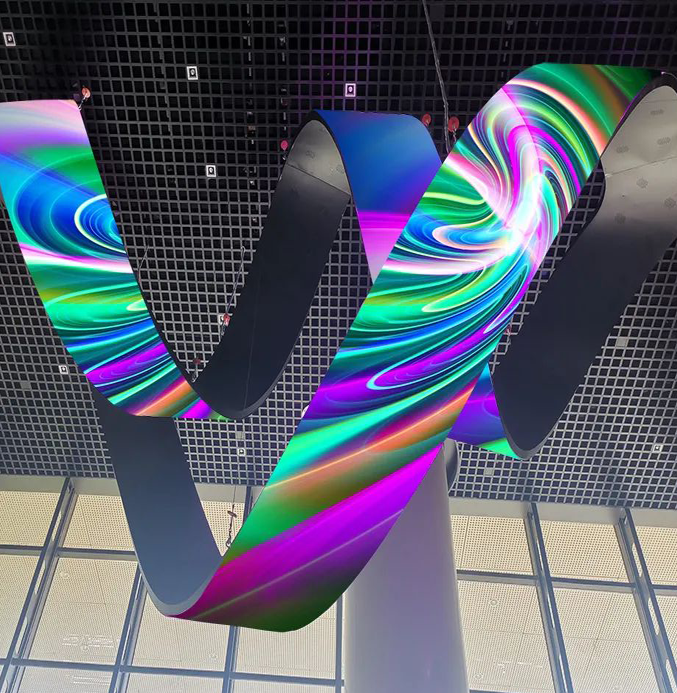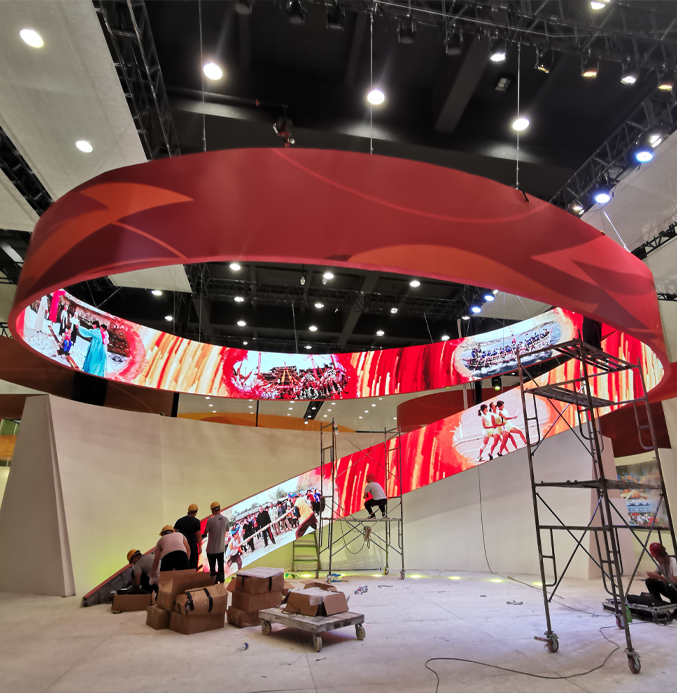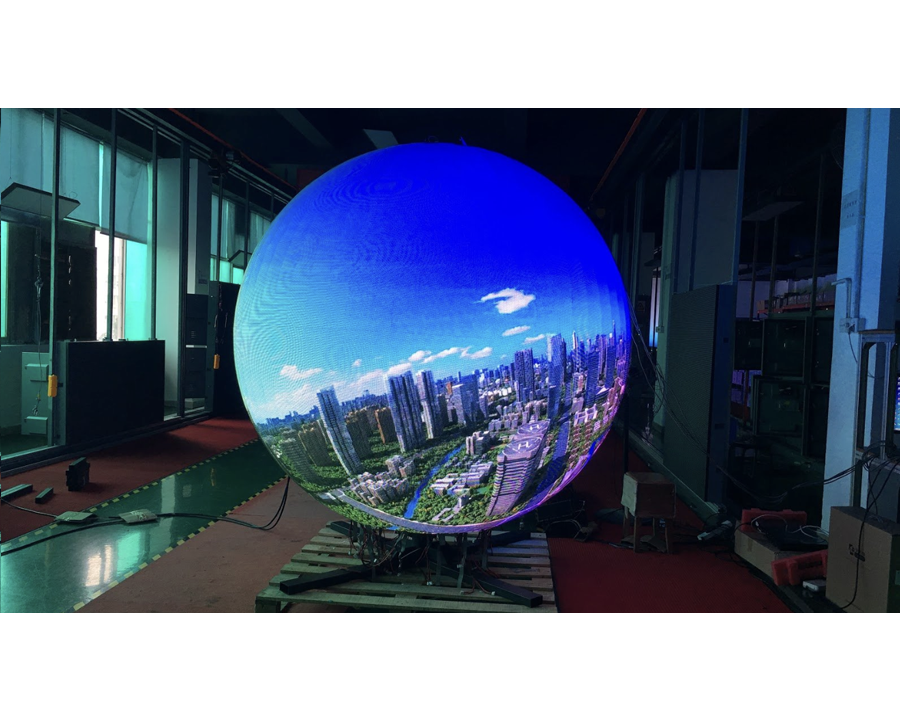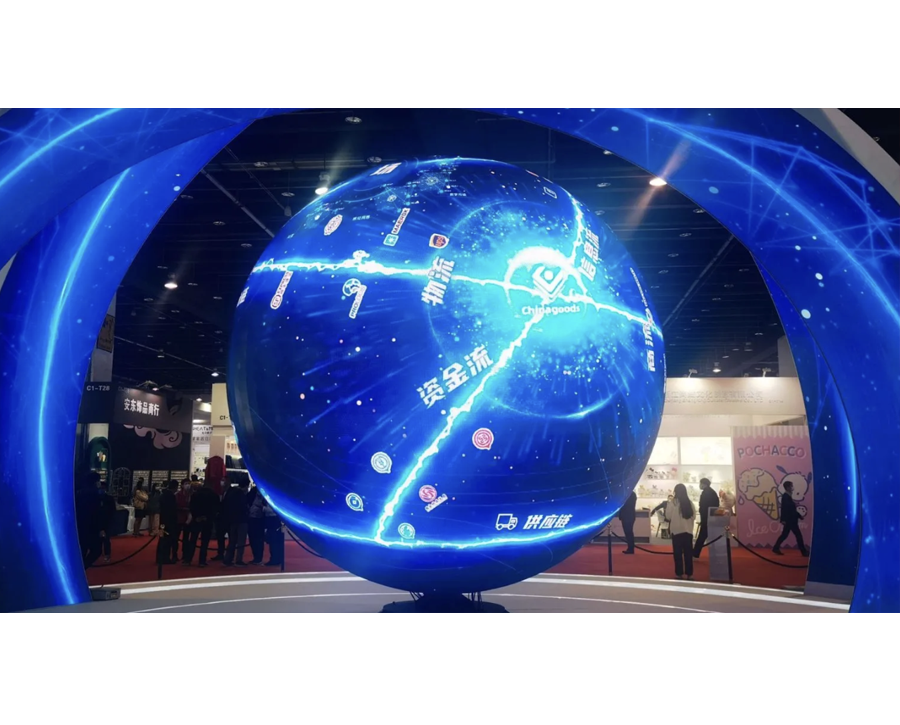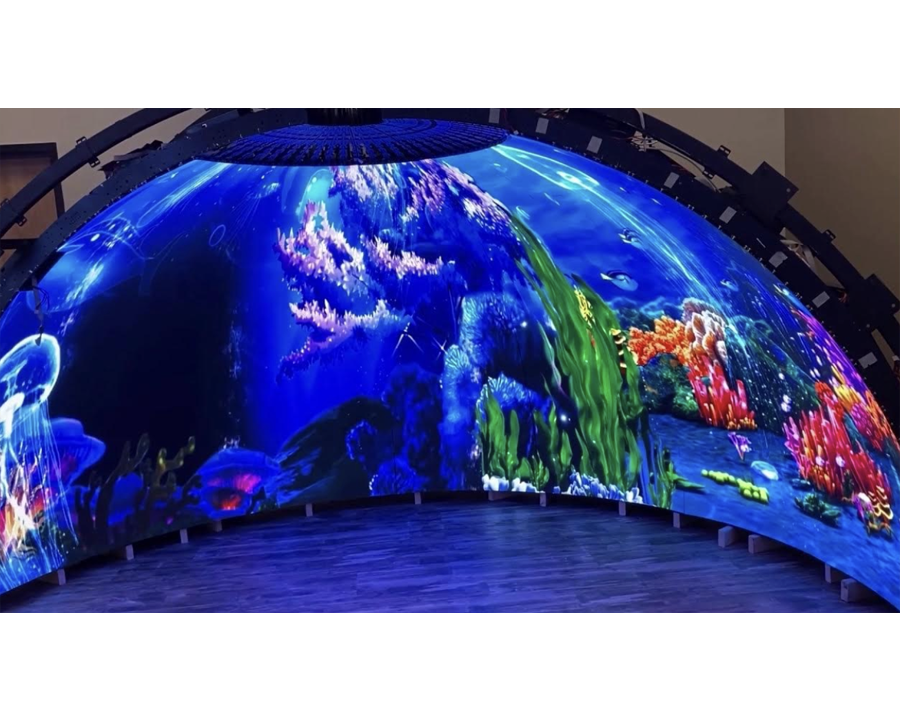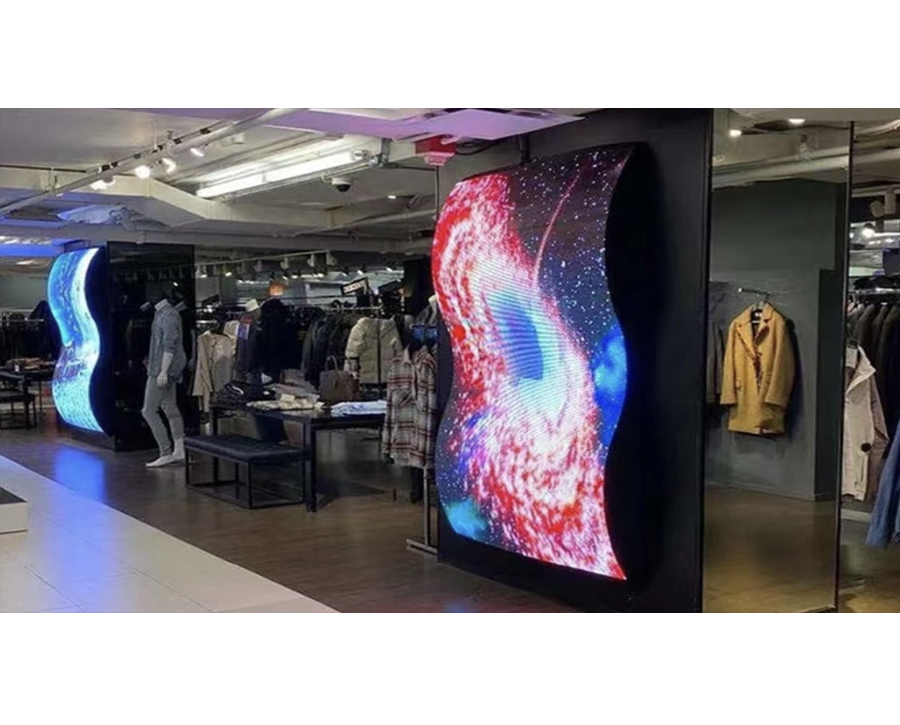
For marketing applications or other uses, flexible led displays are excellent for their design, function, and performance. Selecting the right one however, depends on your knowledge of some elements of the product and each of these affecting the display.
Understanding Flexible LED Screens
Flexible led screen displays are one of the most advanced forms of display technology out there that provide the brightness and vibrancy of LED screens, but in a more flexible matrix form. The major difference with conventional LED panels is that flexible led display screen panels can bend, curve and conform to any contours in its application.
These screens are either OLED or micro-LED based with high-resolution, high color accuracy with flexible substrates such as plastic or polymer films. This makes the screen not only flexible but is also harder than a glass-based screen and can withstand different forces. Despite being bendable, flexible LED screens are as good as rigid LED screens when it comes to brightness, contrast, and clarity.
LED flex screen displays can be placed in conventional and unconventional setting, and since their sizes are not predictable, they are most suitable for unconventional settings. These screens are finding further applications in current and new electronic products due to their increasing thinness, lightness and lower power consumption.
Factors to Consider When Choosing a Flexible LED Screen
To choose the right flexible led screen display for a certain project there are certain aspects one should not forget. It is important to comprehend how these factors influence performance and compliance of the product with the user’s requirements in order to make a correct decision.
- Screen Size: Screen size is the biggest determinant of both reach and effect of your screen. Large screens are preferred for advertising and billboards, public projections, and large installations while small screens are used for personal and wearable uses cases. The distance from viewers should determine the size of the screen to be used.
- Resolution: Resolution directly influences the clarity and detail of the images displayed. The two higher resolutions of 4K or 8K resolutions are best suited where image quality is important. For example digital signage or video walls. For less detailed content like this static advert, it is possible to work with low resolution for displaying on, say, large screens or billboards..
- Flexibility: led flexible display screens can be available in different flexibility levels; from mildly curved to rollable displays. Depending on the goals of the screen you intend to design you need to know whether it has to be bendable or foldable without any negative effect on the screen.
- Brightness: Brightness levels vary with the use of the phone depending on the prevailing working environment. Higher brightness is needed for applications that are placed outdoors or rooms with high levels of ambient lighting where the screen has to be observed from great distances. Dimmer lighting as in the trade shows or exhibits can also be less intense, and hence can actually save power.
- Durability:Anti-glare screens or screens that are IP rated are able to handle varying weather conditions and are therefore suitable for use in places such as outside billboards or other installations where the screen is exposed to moisture, dust or fluctuating temperatures and humidity.
Common Applications for Flexible LED Screens
Today, flexible led panel displays are applicable in many fields to offer unconventional solutions for industries that focus on advertisement, retail designs, tradeshows and breathtaking designs and installations. They can easily adapt to any form or surface, making them possible to use in standard and non-conventional applications. Here’s an overview of some of the key applications:
- Advertising and Retail: The use of flex led display screens has become part of modern advertisement. They mostly apply them to develop fabulous layouts that they can effectively utilize to attract customers and engage them with the products.
These screens can cover pillars, be placed in windows or even on floors which gives the advertisers new ways to influence the customers. For example, companies such as Coca-Cola used Flexible LED displays, allowing them to produce engaging advertising campaigns that can encompass a pillar or a wall.
- Trade Shows and Exhibitions: Stretchable led panel flex displays have gone a long way in changing how most firms introduce themselves at trade fairs and shows. They can easily be curved to fit any booth, making it easier to display or market products/ services.
- Creative Installations: Flexible LED Screens have given the artists new freedom in art as well as in architecture. These screens can be placed on curved walls, ceilings, and also other hard-to-describe surfaces as a part of amazing, unique artwork. Artists use such screens to display the information where the image transforms with time.
- Sports Arenas and Stadiums: Flexible LED screens are also gaining importance in the sports sector where they converged into large format visualizations in stadiums and sports complexes. These screens are generally placed in seating sections, concourses and yes, on to the field.
How to Determine the Best Resolution and Brightness
When choosing a flexible LED screen, understanding the optimal resolution and brightness for your specific use case is critical to ensuring an effective display. Here’s how to assess each aspect:
- Resolution: LED screen resolution means the capability of a screen to display dots per inch or DPI. UHD performs better than HD do by providing clearer images; therefore, their usage is recommended where fine details of tasks are possible. For instance, when it comes to digital signs deployed in a commercial area, 4K quality will help to provide razor-sharp pictures to attract the attention of citizens.
- Brightness: Luminance is expressed in nits and it is the correct level depending on the environment where the screen will be located. When it comes to outdoor application or usage, in rooms with high levels of natural lighting, a minimum of 1,000 nits or more is required to achieve a higher brightness level.
Basic or general flexible transparent led screen displays, for example, those that are used in stadiums or in the frontages of commercial stores and buildings, are most likely to be equipped with extra brightness to enable them to overcome direct sunlight. For interior applications, it may be advisable to use lesser brightness, save power, and increase the screen’s lifetime.
Durability and Weather Resistance Considerations
Durability and weatherproofing are highly important when buying a foldable led screen, especially if the screen is going to be used outdoors. It is therefore important that the flexible screens be highly resistant to various weather conditions and constantly manipulated. Here’s what to consider:
Where screens are used outdoors, durability dictates the type of screen to be used in the exterior. Outdoor flexible LED displays are usually set up with protected enclosures and coated with water and dust-repellent frames.
Look for a screen with an IP (Ingress Protection), which is used to determine just how protected it will be against dust and water. For instance, the IP65 rating indicates that the screen is sealed against dust and can still endure powerful water jets.
The other feature to look out for is the screen’s ability to handle the environment’s temperatures. Flexible LEDs are required to work under extraordinarily low and high temperatures from winter to summer.
High-resistance screens help maintain the screens operational no matter the environmental conditions in the given year. Consider buying screens with active cooling or heat-shielded screens in high-temperature conditions.
Conclusion
The choice of a flexible LED screen is a task of identifying the right resolution, brightness, and durability. As LED screens continually advance, so are these features. It seems that they will continue to offer us even more sophisticated, ultra thin flexible led screen displays and revolutionary displays suitable for several industries and use cases.
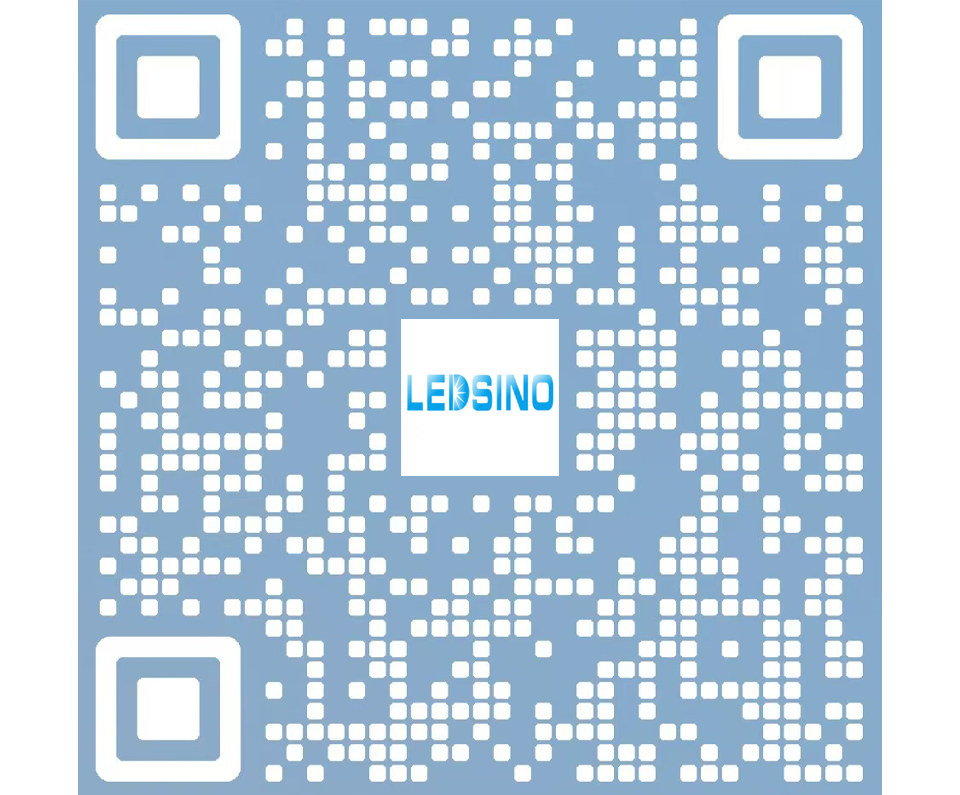
Enter the digital world with our advanced display technologies.

